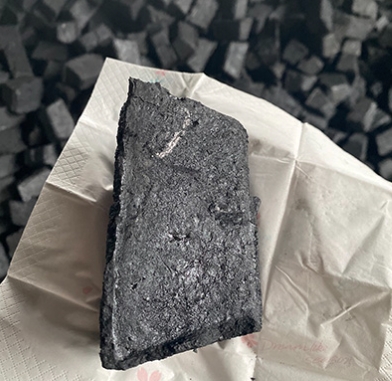
Carbon pastes with conductivity are necessary for many electronic devices, both printed and flexible. However, they are complicated to use due to several issues such as replacing toxic synthesized materials, achieving a suitable level of electrical conductive, and controlling thickness of the coated films. Researchers have created a waterborne carbon paste to address these challenges by coating carboxymethylcellulose (CMC), on graphene microplatelets (GNPs) or carbon nanotubes. The resultant thin and conductive electrolyte film is free from metallic elements and is suitable for printed and flexible electronics.
Its primary role is to ensure that current flows between electrodes when an electrolytic method is being used. Other important properties of electrode paste include maintaining the stability and performance of the electrodes as well as participating in chemical reactions. It is also required to have a very high level of mechanical strength, in order for it to withstand stresses produced during industrial processes. The electrode paste is usually made of gas-calcined anthracite. However, it can also be mixed with other carbon materials, such as artificial graphite or coal tar pitch, to improve its performance.

It is a key ingredient in the production of ferroalloys, such as calcium carbide and yellow phosphorus, in electric furnaces. It is used to produce ferroalloys such as yellow phosphorus and calcium carbide in electric furnaces. The quality of finished product heavily depends on the quality electrode paste.
An electrocatalyst is also used in aqueous environments to catalyze the oxygen reductiation reaction. ORR is the key energy conversion for fuel batteries and Zn/air cells, but can be difficult. It is essential to commercialize ORR by developing a stable, cost-effective carbon electrolyte. This study shows how carbon-based powders derived from lithium-ion waste can be effectively used as a catalyst for ORR.
EEG electrodes need conductive carbon to hold them in place as they transmit signals from the head to a device or computer. It is crucial that the electrodes are conductive to avoid interference with other electrical sources like the heart rate of the patient and ensure accurate results. The conductive carbon is paste must also be strong enough to keep the electrodes in their place during testing. Ten20 Conductive Paste has just the right amount of adhesiveness and conductivity for electrodes to stay in place, without disrupting tests or causing discomfort to patients.
The paste is non-toxic and water-based. It has a perfect consistency to use on skin, as it does not dry quickly. It comes in convenient tubes or jars that are easy for you to carry around. You can also mix it with other products to make customized solutions. All of our conductive carbon pastes are made with environmentally-friendly and non-toxic ingredients to promote patient safety, and each has an expiration date and list of ingredients printed on the label.

Write a Message